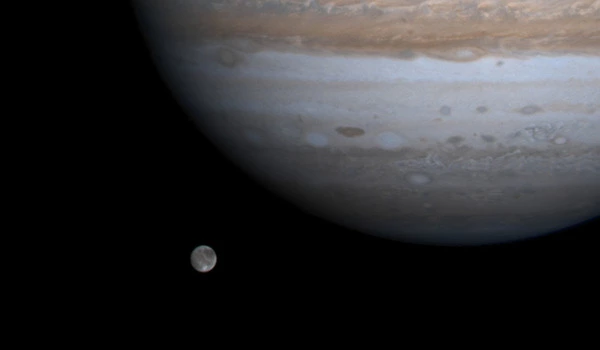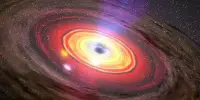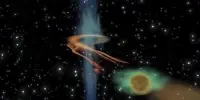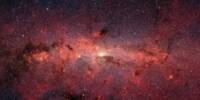Juno is a NASA spacecraft that orbits Jupiter. It was built by Lockheed Martin and is operated by NASA’s Jet Propulsion Laboratory. The spacecraft was launched as part of the New Frontiers program from Cape Canaveral Air Force Station on August 5, 2011 UTC. On July 5, 2016, UTC, Juno entered Jupiter’s polar orbit to begin scientific investigations of the planet. Juno will be intentionally deorbited into Jupiter’s atmosphere once its mission is completed.
On November 29, 2021, NASA’s Juno mission completed its 38th close flyby of Jupiter. The JunoCam instrument on board the spacecraft captured this view of two of Jupiter’s largest moons as it flew low over the giant planet’s cloud tops.
Jupiter’s composition, gravitational field, magnetic field, and polar magnetosphere will all be measured by Juno. It will also look for clues about how the planet formed, such as whether it has a rocky core, how much water is present in the deep atmosphere, mass distribution, and its deep winds, which can reach speeds of up to 620 km/h (390 mph).
The JunoCam instrument on board the spacecraft captured this view of two of Jupiter’s largest moons as it flew low over the giant planet’s cloud tops.
Hurricane-like spiral wind patterns known as vortices can be seen spinning in the planet’s north polar region in the foreground. These powerful storms can reach heights of over 30 miles (50 kilometers) and span hundreds of miles.
Juno will fly close to Io in December 2023 and February 2024, the first close encounters with this fascinating moon in over two decades. Io is our solar system’s most volcanic body, and its eruptions leave a trail of material behind that both fills Jupiter’s magnetosphere and forms a torus of gas and dust around Jupiter. Juno will study Io’s volcanoes and geology, look for signs of a magma ocean, and investigate how Io interacts with Jupiter’s massive

The original version of this image was created by citizen scientist Gerald Eichstädt using raw JunoCam data, and it was then further processed by another citizen scientist, Thomas Thomopoulos, who zoomed in and made color enhancements.
North is down in this view. Juno was about 8,700 miles (14,000 kilometers) above Jupiter’s cloud tops at a latitude of about 69 degrees, traveling at about 123,000 mph (198,000 kilometers per hour) relative to the planet at the time the image was taken.
Juno is the second spacecraft to orbit Jupiter, following the nuclear-powered Galileo orbiter from 1995 to 2003. Unlike previous missions to the outer planets, Juno is powered by solar panels, which are commonly used by satellites orbiting Earth and operating in the inner Solar System, whereas radioisotope thermoelectric generators are commonly used for missions to the outer Solar System and beyond. However, for Juno, the three largest solar panel wings ever deployed on a planetary probe play an important role in both stabilizing the spacecraft and generating power.
NASA’s Juno mission is orbiting Jupiter and sending back amazing photos, atmospheric data, and other observations about the largest planet in our solar system. Juno was launched on August 5, 2011, and arrived in orbit around Jupiter on July 4, 2016. It is the most distant space probe ever to be powered by solar arrays. The $1.1 billion mission is scheduled to last until July 2021, but the science it brings back will last a lifetime.
















